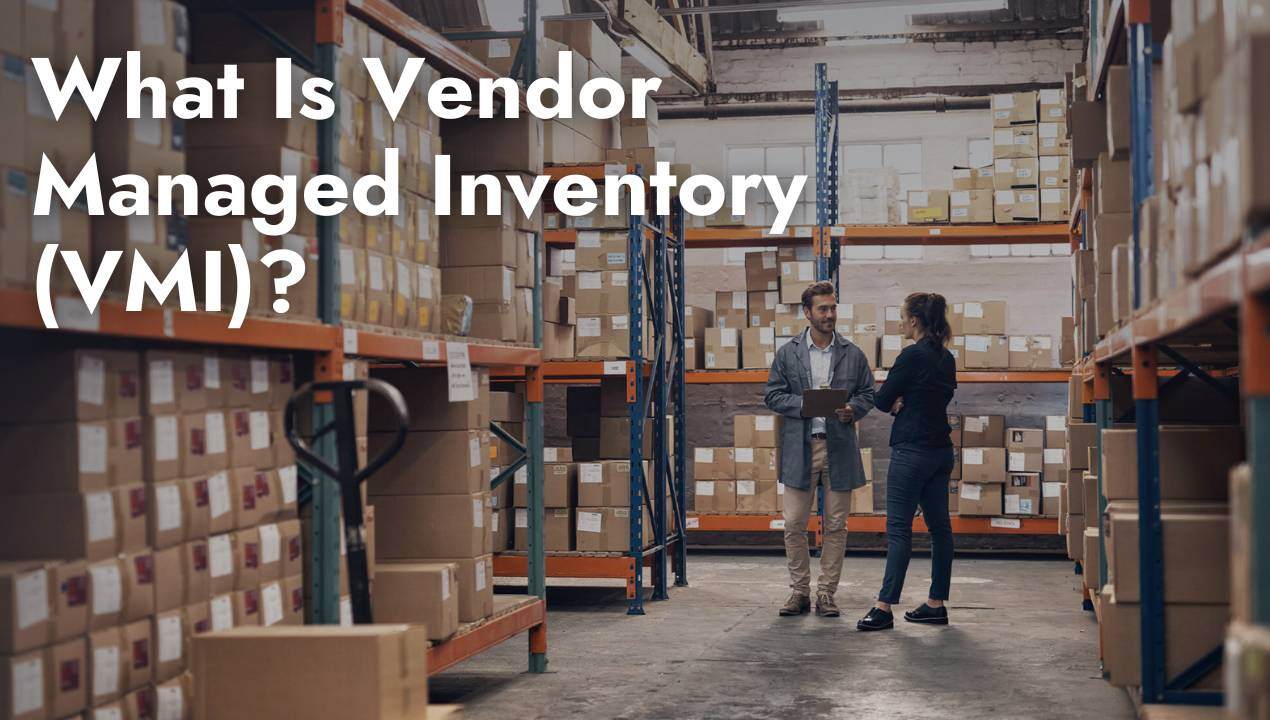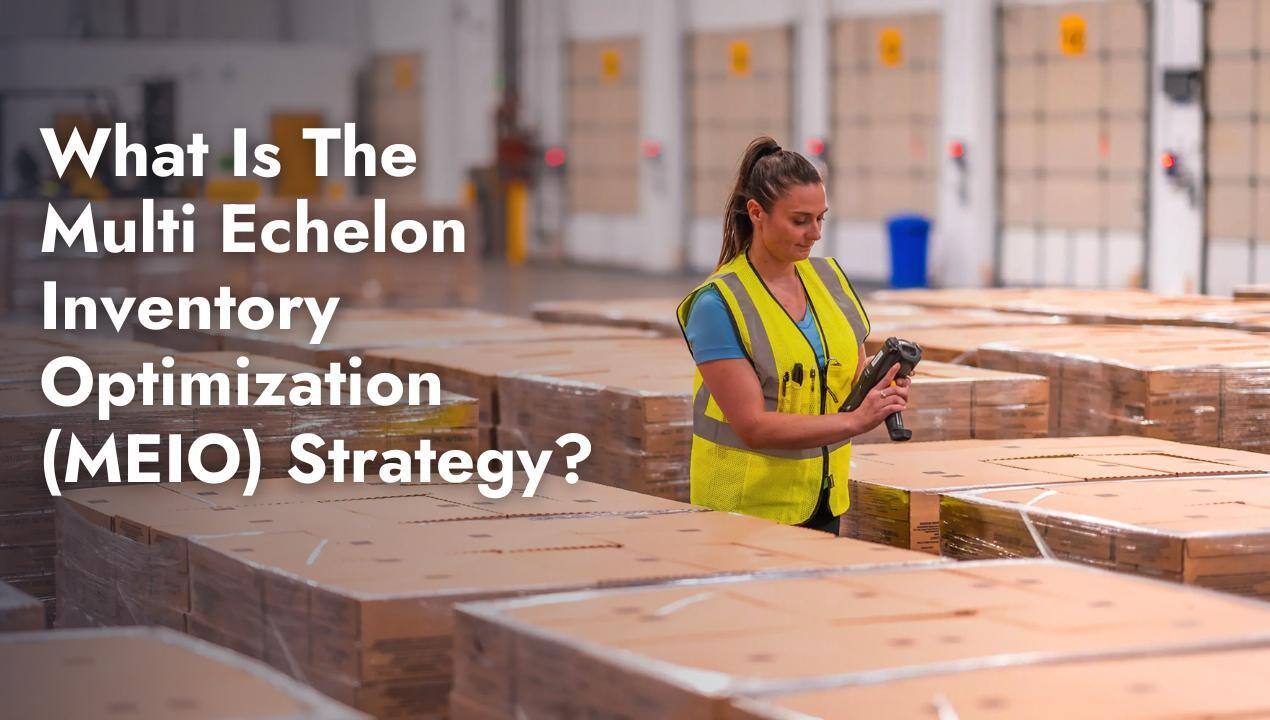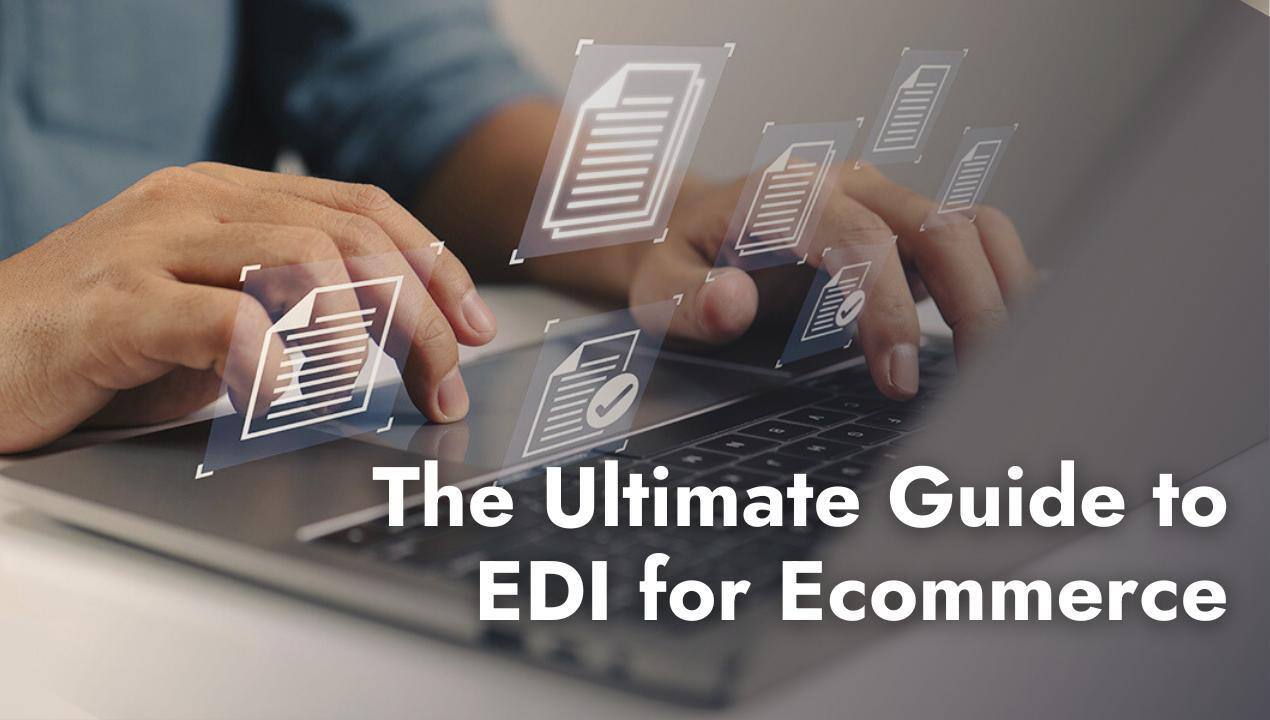Share this
Comparing the Pros and Cons of Vendor Managed Inventory
by Rin Mosher on Jun. 7, 2024

Inventory management has the power to impact everything from operational costs to customer satisfaction. Opting to handle it in-house means being fully responsible for the way results are pursued and how well they’re achieved. That’s great for total control over stock levels, but it can also be risky. Businesses without the expertise or technology to manage inventory in an efficient and cost-effective way often consider Vendor Managed Inventory (VMI) as a potential alternative.
In this article, we discuss what the vendor managed inventory model is, how it works, and when using it makes the most sense.
What Is Vendor Managed Inventory (VMI)?
Traditionally, businesses handle inventory management on their own by deciding where and how to store products upon delivery from suppliers. This is usually an owned or leased warehouse or ecommerce fulfillment center. The facility must have systems in place to track inventory as it comes in, when it is accessed, and when it needs to be reordered.
With vendor managed inventory (VMI), also known as continuous replenishment or supplier managed inventory, the supplier (vendor) is responsible for managing inventory in their customer's facility. The vendor monitors, maintains, and replenishes stock to ensure the buyer has enough supply to meet demand while keeping inventory costs down.
With VMI, the vendor acts more as a partner in supply chain management who proactively helps for mutual benefit than just a passive order taker. VMI is different from consignment inventory, which is when the supplier retains ownership of goods until the retailer sells it.
How Does a Vendor Managed Inventory System Work?
VMI delegates the responsibilities of monitoring and managing inventory to vendors. The supplier and customer – in our case, an ecommerce business – agree on what minimum and maximum stock levels need to be maintained to maximize cost savings while mitigating the risk of stockouts. Businesses own, store, and are liable for the costs associated with the inventory their supplier manages.
A typical VMI process goes as follows:
- The ecommerce business and their supplier/vendor agree on minimum and maximum inventory levels for each SKU.
- The ecommerce business’s inventory management system or warehouse management system shares real-time stock level data with the supplier. This is often done via Electronic Data Interchange (EDI) systems or an online portal.
- The supplier monitors the customer's inventory levels daily. When stock drops below the agreed-upon minimum threshold, the supplier generates a purchase order to replenish the items.
- The supplier sends the purchase order to the customer for approval. Once approved, the supplier arranges for the products to be shipped to the customer's warehouse or fulfillment center.
- Upon receipt, the customer updates their inventory records. The supplier invoices the customer and the customer pays for the goods.
The supplier continuously manages the replenishment process from end to end based on a distribution plan that considers demand forecasting and supply chain KPIs such as point of sale, current inventory levels, inventory turnover ratio, and order frequency in the context of specific business goals.
Vendor Managed Inventory Example
To better differentiate vendor managed inventory from other traditional inventory management methods, we've created a comprehensive example that illustrates VMI implementation in a real-world business scenario.
In this case, a manufacturing company partners with its key component supplier to implement a VMI system. The supplier gains direct access to the manufacturer's inventory data through integrated software, monitors stock levels in real-time, and automatically replenishes materials when they reach predetermined thresholds based on customer demand—all without requiring purchase orders for each delivery.
Benefits of Vendor Managed Inventory
Vendor Managed Inventory benefits businesses that aren’t equipped or ready to pay for in-house inventory management. Here’s an overview of what those advantages are and how they solve problems inherent to traditional in-house inventory management:
Reduced Inventory Carrying Costs and Stockouts
Inventory management has a significant influence on every ecommerce business’ bottom line. Not only do products themselves cost money, but the space and resources required to safely store them also comes at an expense. This cost only grows as stock sits idle on warehouse shelves.
Businesses must ongoingly gauge the amount of inventory they need to avoid stock outs while keeping holding costs to a minimum. A VMI partner’s expertise and resources can ensure balance, and in doing so, promote long-term savings and supply chain efficiency.
Improved Forecasting and Production Planning
VMI arrangements run on data, so it’s no wonder why insight is a big benefit. Comprehensive reporting about operational changes and patterns positions decision-makers to create better-informed production and fulfillment strategies.
For example, real-time sales data enables suppliers to be proactive in inventory replenishment, reducing the risk of stockouts. VMI reporting systems can also inform demand forecasts, which can then be used to optimize production schedules and ensure the right products are made in the right quantities at the right time. Effective prioritization of products based on this data helps businesses allocate resources efficiently and meet demand.
Enhanced Visibility and Communication Across the Supply Chain
Requiring close communication and data sharing between suppliers and customers, VMI fosters greater transparency and visibility across the supply chain. Both parties understand that the system only works if they work well together. Proactive partners are then better equipped to quickly identify and resolve changes in inventory turnover before they become serious issues, leading to a more efficient integrated logistics system.
Increased Focus on Core Competencies vs. Managing Inventory
Inventory management is a massive undertaking, yet it’s only one thing on the laundry list of jobs necessary to keep an ecommerce business’ operations running smoothly. Outsourced arrangements, whether for inventory management or fulfillment, delegate complex responsibilities to experts with the resources and infrastructure to handle them well.
Rather than having to worry about when to reorder stock or how much safety stock to carry for optimal inventory levels, businesses can direct their attention to activities that drive growth and profitability, such as product development, marketing, and customer service.
Drawbacks of Vendor Managed Inventory
Vendor managed inventory proves to be a smart choice for many ecommerce businesses, but it isn't right for everyone. There are certain circumstances in which a VMI relationship won't serve you well long term. We list a few notable drawbacks below.
Less Control Over Inventory
VMI, by definition, means handing the reins of inventory management over to the vendor. That's exactly what some ecommerce store owners want – an external partner to lead things so they can focus on core business activities. But for businesses that prefer to retain full control and visibility over their inventory, a VMI system may not be the best fit. The vendor will lead decision-making on stock levels, replenishment frequency, and other key factors.
Potential for Communication Issues
Effective VMI is built on a foundation of clear, consistent communication between the supplier and the customer. Both parties need to be on the same page about inventory goals, performance metrics, and expectations.
If there are breakdowns in communication or a lack of transparency, it can lead to misaligned incentives and compromised inventory accuracy. This is especially true if the vendor and customer use different systems or processes for tracking inventory data and sales data.
Dependence on a Single Supplier
Under a VMI arrangement, you rely heavily on a single vendor to keep your inventory well-stocked and your operations running smoothly. This can negatively impact supply chain resilience if that trading partner experiences disruptions, capacity constraints, or other issues that impact their ability to fulfill orders.
Businesses considering this approach to inventory management should thoroughly vet potential partners. Changing suppliers is an arduous process, and in the case of VMI, it means committing to a single supplier’s prices, quality control measures, and standards of service.
When to Use Vendor Managed Inventory
Ecommerce sellers typically use VMI when they don’t have enough in-house resources to optimize stock levels on their own. It's especially valuable with diverse sets of products that require comprehensive tracking. Perishable consumer packaged goods, for example, are often managed using First-In, First-Out (FIFO) protocol to reduce spoilage. This date-based system involves more detailed recordkeeping and therefore requires additional work that a VMI partner can take on. Because inventory management becomes harder with more SKUs, businesses with large product lines similarly benefit from having a supplier optimize stock levels on their behalf.
On the opposite side of the coin, VMI is less valuable in cases where a business doesn’t have an extensive range of products. Even those that do may have reservations about passing the powers of inventory management over to suppliers. Successful VMI partnerships are built on trust and communication. A lack thereof can lead to stockouts, excess inventory, and higher holding costs.
It's also worth recognizing the fact that VMI only outsources the responsibilities of inventory management – not the ownership. Inventory belongs to the seller until it's sold, which means committing to covering the costs of storing, insuring, and writing off any excess or obsolete stock along with any payment agreed upon in a contract with the VMI supplier.
Businesses looking for a cost-inclusive option should consider working with a third-party logistics (3PL) partner. These companies offer inventory management and are equipped to handle warehousing, order fulfillment, and shipping. 3PLs also provide value-added services like kitting, packaging, and returns processing – all within the same facility.
Shipfusion Is Better Than Basic Vendor Managed Inventory
Inventory management is a big job that necessitates full attention. If you don’t want to commit to a single supplier or want to tap into the expertise of an entire network of storage and fulfillment trading partners, work with Shipfusion. Our 3PL solutions include comprehensive lot tracking, real-time data reporting, dedicated Account Managers, and so much more. Learn how we can help you scale your business without limits by contacting us today.
Share this
You May Also Like
These Related Articles

What Is the Multi Echelon Inventory Optimization (MEIO) Strategy?

How to Calculate Inventory Carrying Cost In Ecommerce

The Ultimate Guide to EDI for Ecommerce
- April 2025 (23)
- March 2025 (26)
- February 2025 (26)
- January 2025 (37)
- December 2024 (16)
- November 2024 (23)
- October 2024 (22)
- September 2024 (27)
- August 2024 (9)
- July 2024 (8)
- June 2024 (5)
- May 2024 (8)
- April 2024 (8)
- March 2024 (6)
- February 2024 (6)
- January 2024 (5)
- December 2023 (3)
- November 2023 (3)
- October 2023 (5)
- September 2023 (4)
- August 2023 (2)
- July 2023 (1)
- June 2023 (4)
- March 2023 (2)
- October 2022 (1)
- September 2022 (5)
- August 2022 (4)
- July 2022 (7)
- June 2022 (4)
- May 2022 (4)
- April 2022 (6)
- March 2022 (2)
- February 2022 (1)
- January 2022 (3)
- December 2021 (2)
- November 2021 (4)
- October 2021 (2)
- September 2021 (5)
- August 2021 (4)
- July 2021 (4)
- June 2021 (3)
- May 2021 (2)
- April 2021 (3)
- March 2021 (3)
- February 2021 (3)
- January 2021 (2)
- December 2020 (4)
- November 2020 (2)
- October 2020 (4)
- September 2020 (2)
- July 2020 (5)
- June 2020 (4)
- May 2020 (2)
- April 2020 (2)
- March 2020 (4)
- February 2020 (1)
- December 2019 (1)
- May 2018 (1)
- March 2018 (2)
- February 2018 (3)
- January 2018 (3)
- November 2017 (3)
- July 2017 (4)
- March 2017 (3)
- February 2017 (5)
- January 2017 (3)
- December 2016 (4)
- November 2016 (6)
- October 2016 (6)
- October 2015 (1)
- September 2015 (1)
- June 2015 (3)
- May 2015 (3)
- August 2014 (1)
- July 2014 (1)
- March 2014 (1)
- February 2014 (1)